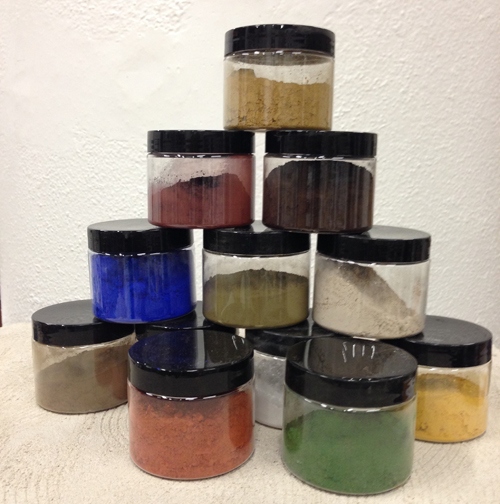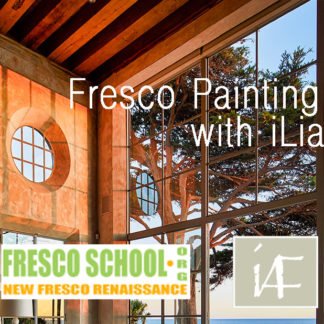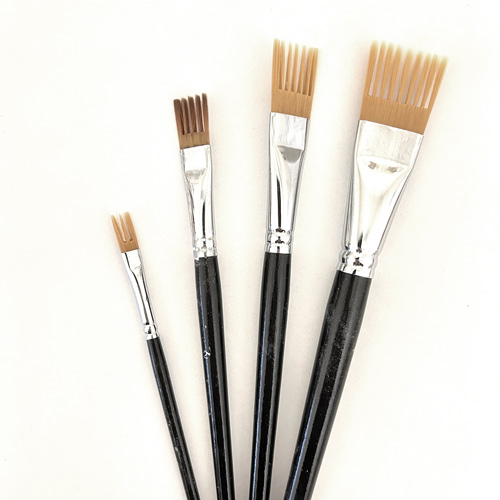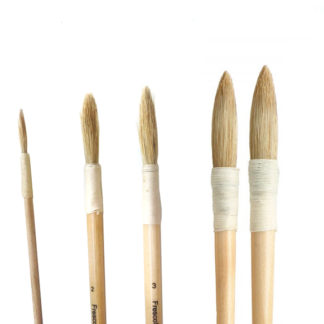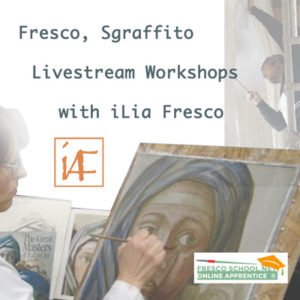To the sounds of classical music, I sat down last Sunday for grinding of pigments, and I poured out my dry pigment of Verdaccio into a little pile, onto my glass top table, making sure as Wolf said, that everything was kept very clean and pure. I made a small well in the center of the pigment, and poured a small amount of distilled water into this center. There were no chemicals. Just the essence of the pure earth pigment, the water, and me. And so I began.
I started with Verdaccio, because to me, it is the ‘mother’ of all the paints and most importantly will be what I use for my underpainting. Verdaccio is a dark green, brown earth substance. I am mixing a limited amount of pigments for my palette; ochres, sienna, umber, red, terre verde, ultramarine, and bianco san giovani. In fresco, not many colors are needed, as the colors are kept simple, and beauty grows out of the underpainting and the different layers of paint which form depth.
I have a 2-inch grinder, that I am using. There are different sizes, but I liked the smaller size as it fits my hand better and gives me better control. As mentioned, once the water is poured into the center of pigment, I start to grind in a circular motion, and start to get a nice rhythm going along with the music, adding a little water as needed. After the initial grinding, I take a scraper and scrap the pigment back into a pile again, and begin the process once again and again. I noticed that different pigments react differently to the water and under a muller. Ultramarine and reds tend to dry up more quickly than others. My yellows and greens took me longer to grind before I came to a nice consistency. On the whole, I grinded some pigments for a half hour, others for over an hour. The test to a nice consistency, is that the grinder, when given a small push, should glide smoothly by itself over the pigment. When I was done, I spooned the pigment into a small jar, trying not to touch the sides of the glass. I filled the jar with distilled water and covered tightly with a lid, and in this state they can sit for a long time. The pigment grinding will not need to be done very often, as the amount that I grinded today, will last me quite some time. A little amount of pigment will go a long way on a fresco. On the day of actual painting, I will grind some lime or bianco san giovani and use to mix into my pigment.
There is something about taking part in making these pigments come to life, and see them transition into a smooth, beautiful glow, that I enjoyed very much, and a connection is made between the artist and the colors. Sad that this step is bypassed in most other art mediums, as you simply walk into your local art store, and pick up your paint in tubes. Nor, will I be able to request a canvas already primed with plaster from my local art store, right Ian? Instead, I am developing the chemistry knowledge of the mixtures to spread my own.
That is one of the things I love about fresco painting. It demands that the artist has knowledge of all the parts that make up its being, and it demands an intimate participation from the artist with each step, from beginning-to-end of a beautiful fresco.
Sylvia Hunt, fresco artist
Base & Historic Fresco Pigments List

